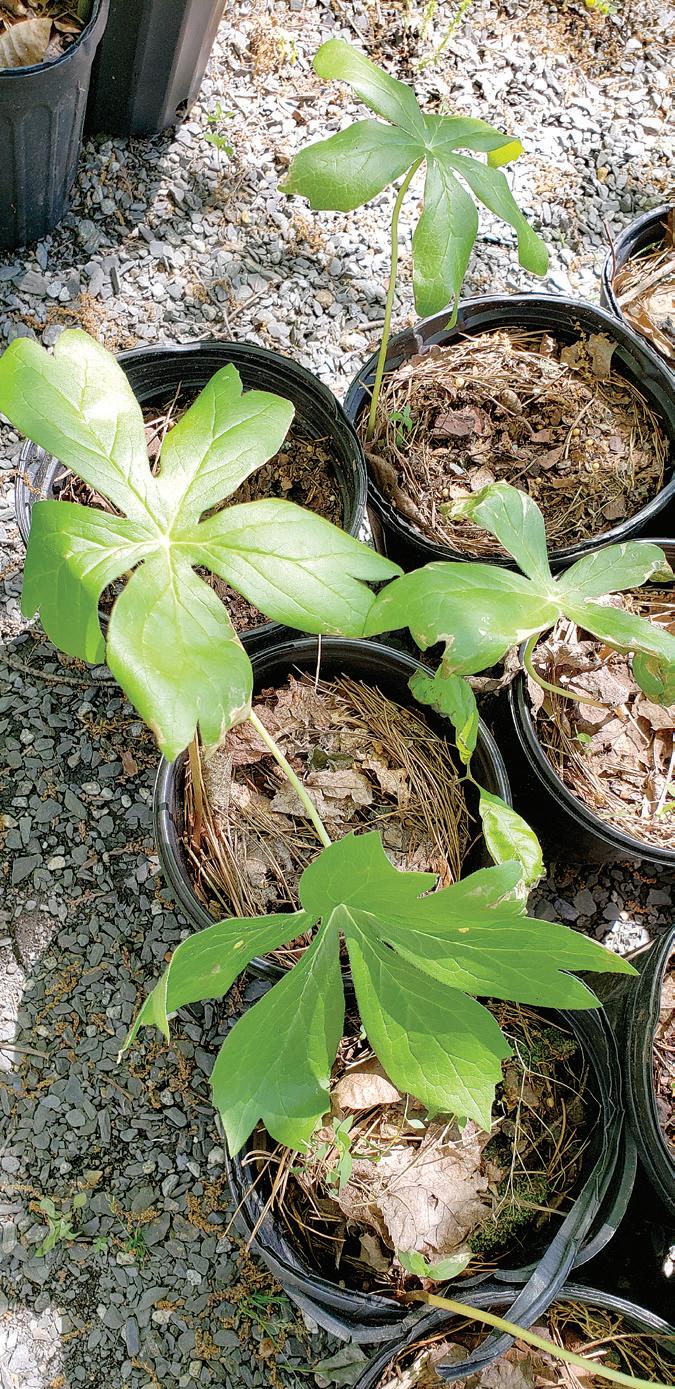GARDENING
Water matters in the garden Water is the center of life on Earth. Water covers 61% of our Earth’s surface. I am made of nearly 60% water, and water makes up as much as 95% of some plants. Plants are basically water and a few other things, so H2O deserves quite a bit of a gardener’s attention. As the old expression goes, “April showers bring May flowers.” When to water and how much are the critical details to growing healthy plants. Paying attention to rain and drought is important. Watering starts on day one after installation and new plants need to be watched closely starting in May, when
THE ENVIRONMENTAL GARDENER Greg Levine, co-executive director of Trees Atlanta, describes himself as happiest when his hands are in the dirt. rain becomes inconsistent and, with Georgia’s unusual weather, sometimes non-existent. There are no exact rules for watering, but a schedule combined with regular observation decreases the chance for the loss of plants. I like to create separate plans for perennials and woody plants. Perennials typically need frequent watering a few weeks after installation, then twice a week for two or three months. Trees and shrubs need to be watered twice a week after a winter or spring install for at least a month. Once weekly through summer will keep them going, and unlike most perennials it is best to check on them during the second growing season as well. Not all plants are equal when it comes to water, so learn your plant species’ particular needs and make sure they are met.
16
Drought resistant plants still need water for the first growing season to get established, while wetland plants may need watering for several years to get well established and subsidized during drought. Loosening up your soil and mixing in organic matter with a shovel or pitchfork can help with water dispersal, percolation, and drainage. Adding organic matter to the top layer every year can do the trick over time and be easier on your back. Water-wise solutions for the garden include collecting stormwater in rain barrels, using drip irrigation, creating rain gardens, and watering in the morning. Here are a few of my favorite drought-tolerant and waterloving native plants that flower in May. I am a great lover of ephemeral perennials. They are usually found in woodlands, coming up in March and usually disappearing by July, as the heat gets to be too much and rain dissipates. It is great fun to watch them pop up in early spring.
Mayapple (Podophyllum peltatum) appreciates a
MAY 2021 | AtlantaSeniorLife.com
constantly moist to wet soil. It grows to be a bit over 12 inches tall, creates white apple-like blossoms and develops a thicket of little umbrella-like leaves sitting on a stalk. The plant also produces an edible fruit, but the rest of the plant is poisonous if eaten in large quantities.
Another ephemeral is the wood lily, also known as Sweet Betsy (Trillium cuneatum). They can be 4 inches to 14 inches tall. They usually have three dark mottled green leaves and maroon flowers that sit on the top of the stem like a candle flame. A trillium plant can live for a hundred years and can take seven years before it flowers. This is the easiest trillium to grow, but it still needs a high organic soil and average soil moisture. These plants should only be purchased from reputable nurseries, grown in nursery beds or by seed -- not wild collected. Plant save organizations like the Georgia Native Plant Society, can also be good sources for ephemerals, and they can be appreciated in abundance at Woodlands Garden in Decatur. One of the most drought
tolerant perennials is butterfly weed (Asclepias tuberosa). It needs well drained dry soil and full sun, basically thriving with neglect when it’s in the right place. Their lovely orange flowers provide nectar for many pollinators, and it’s a host plant for Monarch, Queen, and Soldier butterflies. When choosing butterfly weed, be aware that the tropical butterfly weed can confuse Monarchs migration because of the extended blooming time and may actually be toxic to them, so it is best not to plant. Make sure you get a native species, and go by the Latin name, when possible.
Deciduous native azaleas (Rhododendron spp.) are a favorite in the garden world. They need average moisture and good drainage, add pine bark
facebook.com/AtlantaSeniorLife








